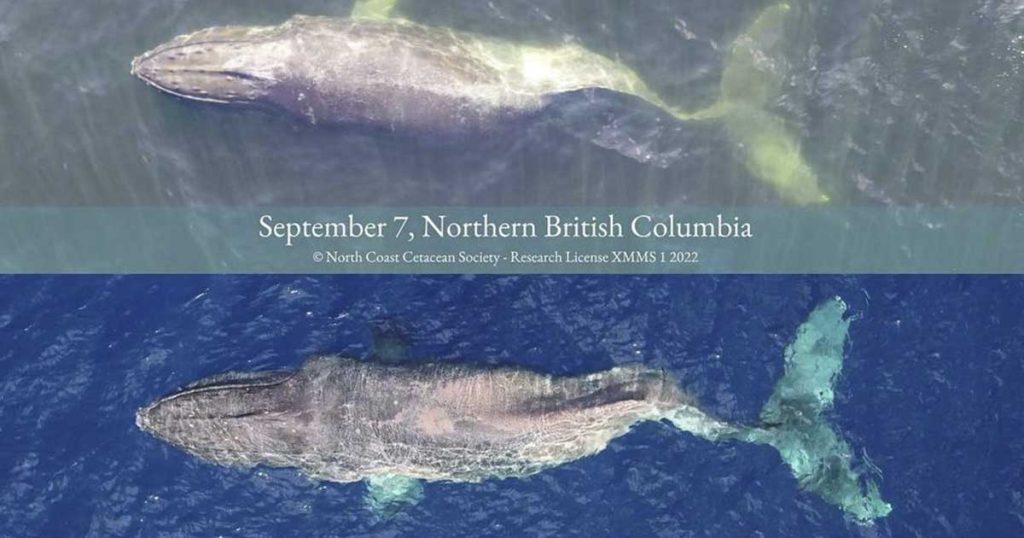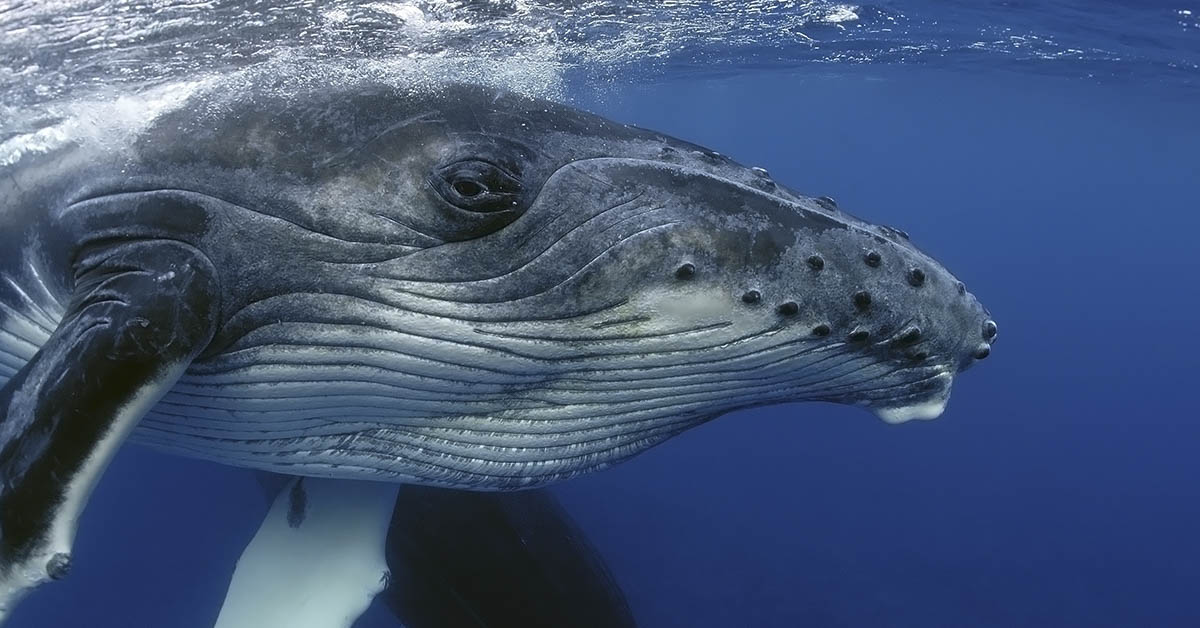Moon has been tracked by researchers for over a decade. Every September, the humpback whale swims from British Columbia, Canada, to Maui, Hawaii, to breed and feed on krill. In 2020, the researchers, based in the Fin Island research station in Gitga’at First Nations territory, celebrated when she appeared with a calf, showing her young her well-trodden breeding and feeding grounds. However, something went wrong this year. Moon swam 3,000 miles to Hawaii with a broken spine.
A Humpback Whale Swims to Hawaii With a Broken Spine
Moon was first spotted on September 7 near British Columbia. A drone shot showed her body contorted into the shape of an S. The researchers believe a collision with a vessel broke her spine. Then she was noticed on December 1, near Hawaiin shores. “The harrowing images of her twisted body stirred us all,” BC Whales said on Facebook. “She was likely in considerable pain yet she migrated thousands of miles without being able to propel herself with her tail.”

She looked emaciated and covered in whale lice, showing the painful severity of her condition. “This is the stark reality of a vessel strike, and it speaks to the extended suffering that whales can endure afterwards,” they wrote. “It also speaks to their instinct and culture: the lengths whales will go to follow patterns of behavior.”
Janie Wray, the CEO and lead researcher for BC Whales, says she had to do the breaststroke to complete the migration. “It’s absolutely amazing,” she said. “But it also just breaks your heart.” Wray theorized that Moon made the journey to follow a tradition that her mother taught to her, as she had taught to her calf in 2020.
Read: Good Samaritans pour water on beached killer whale until it can free itself
“Moon will not make it back”
Because of her injury, there’s talk of euthanizing the poor humpback whale, but it’s not feasible. Wray says that the process would require different poisonous substances that could harm the marine life that feed on the carcass. “If she was on land, we could intervene,” Wray said. “But because she’s in the ocean, and because of her size, there is nothing that we can do. And that just breaks your heart even further into pieces.”
Even so, researchers say that it’s impossible for Moon to swim back to Canada in her current state. “Tenacity & Tragedy. Moon … will not make it back,” they said. “We will never truly understand the strength it took for Moon to take on what is regrettably her last journey, but it is on us to respect such tenacity within another species and recognize that vessel strikes lead to a devastating end.“
Professional diver Kayleigh Nicole Grant found Moon with a drone in Hawaii and reported that sharks are tailing the injured whale. But now, another whale accompanies her, demonstrating the compassion and camaraderie of the species. “It was so hard to see with my own eyes a humpback whale suffer so much,” Grant said on Instagram. “All of her suffering is due to human impact & it kills me that we cause so much damage to nature and wildlife.”
Vessel Strikes on Whales
Many marine animals are at risk of vessel strikes because people operating vessels often can’t see the creatures below the surface. Even if the operator notices them, they may not be able to steer away in time. Unfortunately, the endangered North Atlantic right whales are particularly vulnerable because their habitats and migration patterns are in close proximity to ports and shipping lanes, according to the National Oceanic and Atmospheric Administration.
Additionally, the NOAA reported 37 whales injured by vessel strikes from 2010 to 2014 along the Atlantic coast of North America. They estimate similar numbers on the Pacific coast. One study from 2017 indicated even higher numbers, estimating that about 80 humpback, blue, and fin whales are hit along the west coast each year. “But these minimum estimates are likely low because the number of deaths and serious injuries that go unreported is unknown,” said the NOAA. They add that strikes on smaller marine animals are probably even more unreported and underestimated. [3]
Wray hopes Moon could spread awareness about the damage vessel collisions could have on whales. Humpback whales have been washing ashore along the coast of British Columbia, fatally injured from vessel strikes. Although the numbers of the population have been rising, it’s clear that traffic hasn’t made room for these new whales. “Even if you’re really a focused boat driver, you could accidentally hit a humpback whale because they will just come up in front of your boat. The most important thing to do is everybody needs to slow down, especially in areas where we know there are whales. It’s easy – just slow down. We have school zones. We need whale zones.” [4]
Keep Reading: Whales Return to Antarctic Feeding Areas for First Time in Decades
Sources
- “Moon, a doomed humpback whale with a broken spine, travels 3,000 miles doing breaststroke.” USA Today. Natalie Neysa Alund. December 12, 2022
- “A humpback whale with a broken spine managed to swim 3,000 miles from Canada’s west coast to Hawaii by doing the breaststroke.” Insider. Matthew Loh. December 12, 2022
- “Humpback whale left with broken spine after vessel strike makes her “last journey” – a 3,000-mile swim to Hawaii.” CBS News. Li Cohen. December 15, 2022
- “Moon the humpback whale completes 5,000km journey – with a broken back.” The Guardian. Leyland Cecco. December 11, 2022

